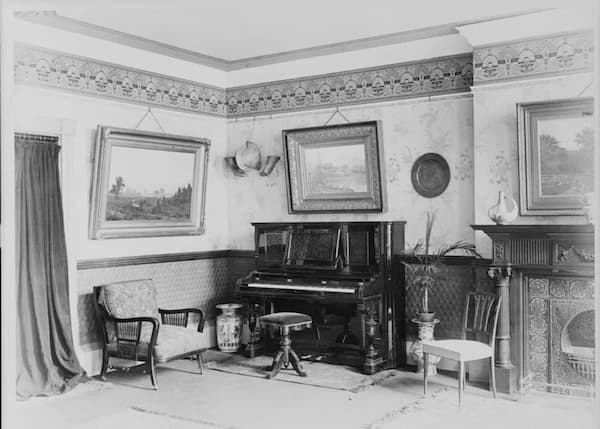
© flyabovethesky/DeviantArt
From J.S. Bach’s Goldberg Variations to Frederic Rzewski’s The People United Will Never Be Defeated, the theme and variations remains a popular musical genre and one which composers have used to create some of the greatest works in the piano repertoire. It’s a simple concept – a theme, or melody, initially stated in its original form, is put through a series of transformations, often quite complex and including textural, dynamic and key changes, to take player and listener on a fascinating musical journey.
Rachmaninoff: Rhapsody on a Theme of Paganini
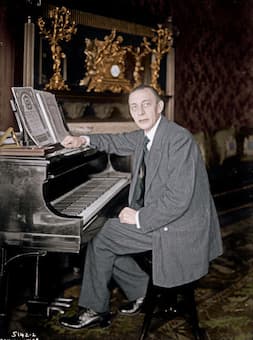
Sergei Rachmaninoff
Inspired by a simple tune by the early nineteenth century violin virtuoso Niccolò Pagainini, Rachmaninoff’s 24 variations on a theme were written in 1934 when the composer was leading a fairly settled life in Lucerne, Switzerland. The work, for piano and orchestra, was premiered by the composer himself, with the Baltimore Symphony Orchestra, and was an immediate success. The variations contain a wide variety of moods, characters and textures and remain a cornerstone of the piano repertoire. The 18th variation is the most famous, with its tender, lyrical love theme, and has been transcribed for solo piano and other instruments. It’s also a popular encore piece.
Sergei Rachmaninoff: Rhapsody on a Theme of Paganini, Op. 43 – Introduction: Allegro vivace (Yuja Wang, piano; Mahler Chamber Orchestra; Claudio Abbado, cond.)
Sergei Rachmaninoff: Rhapsody on a Theme of Paganini, Op. 43 – Variation 18: Andante cantabile (Yuja Wang, piano; Mahler Chamber Orchestra; Claudio Abbado, cond.)
J.S. Bach: Goldberg Variations
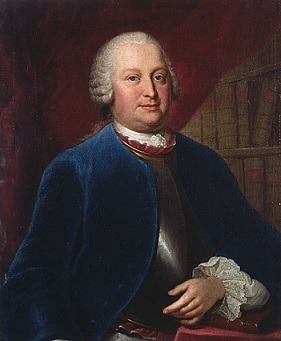
Johann Gottlieb Goldberg
Long regarded as the most serious and ambitious work for keyboard, Bach’s Goldberg Variations originated from a simple idea – a beautiful aria over a ground (repeating) bass followed by thirty variations which present the history of Baroque music in microcosm: lavish displays of modern, fashionable expressive elements of the high Baroque, with just a hint of Classical idealism, together with magnificent structure and formal beauty. There are dances and canons, riddles and doodles, lightning flashes and filigree arabesques which take player and listener on an epic journey. Not until Beethoven’s Diabelli Variations was a similar work conceived on such a scale from a seemingly simple initial idea.
J.S. Bach: Goldberg Variations, BWV 988: Aria (2020 Berlin Studio Recording) (Lang Lang, piano)
J.S. Bach: Goldberg Variations, BWV 988 – Variatio 25. a 2 Clav. (Glenn Gould, piano)
Beethoven: Diabelli Variations
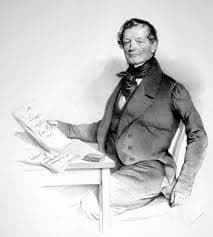
Anton Diabelli
The pianist Alfred Brendel described the Diabelli Variations as “the greatest of all piano works” and like Rachmaninoff’s Rhapsody, they remain one of the most significant and popular works in the classical piano repertoire. The variations originated from a waltz by Anton Diabelli, a music publisher and contemporary of Beethoven’s, who sent his piece to all the well-known composers of Vienna, including Schubert, Hummel and Beethoven’s friend and patron Archduke Rudolph. Diabelli invited the composers to each write a variation on his theme, which he intended to bring together in a single volume. Urban legend has it that Beethoven refused to write just one variation and dismissed Diabelli’s theme as banal. But on learning that a handsome sum would be paid, Beethoven decided to demonstrate his inventiveness using such slim materials as a starting point. The result is 33 variations which display a remarkable range of treatments, imagination, subtlety and power.
Ludwig van Beethoven: 33 Variations on a Waltz by A. Diabelli, Op. 120 – Thema: Vivace (Alfred Brendel, piano)
Ludwig van Beethoven: 33 Variations on a Waltz by A. Diabelli, Op. 120 – Variation 14: Grave e maestoso (Alfred Brendel, piano)
Brahms: Variations and Fugue on a Theme by Handel
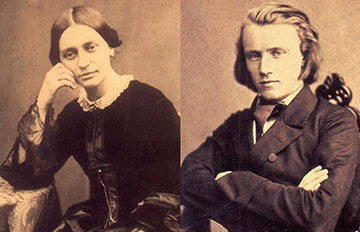
Clara Schumann and Johannes Brahms, 1853 © Brain Pickings
A worthy successor to Beethoven’s Diabelli Variations and considered by some to be equal in importance in scope and variety, Brahms’ 25 variations and a fugue are based on Handel’s Harpsichord Suite No. 1. Perhaps what is even more remarkable is that this is the work of a young man: Brahms was only 28 when he wrote this great pianistic monument. Dedicated to Clara Schumann, Brahms felt this was his best work to date. The theme is pure Baroque, embellished with ornaments, before the music enters pure Brahms territory, with contrapuntal textures, and shifting tempos and moods, the music always moving towards the exuberant final fugue.
Johannes Brahms: 25 Variations and Fugue on a Theme by Handel, Op. 24 (Murray Perahia, piano)
Schubert: Impromptu in B flat, D935, No. 3
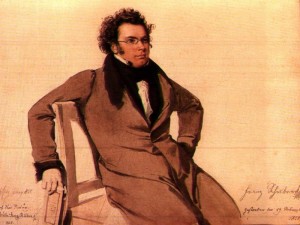
Franz Schubert
Schubert uses the theme and variations genre to elegant effect in the third Impromptu of his D935, written in 1827, the year before he died. The theme is taken from the incidental music for the play Rosamunde, and it also appears in the second movement of his string quartet D804. A lovely theme is followed by five variations, which include elements such as increasing subdivision of note values and ornamentation, similar devices to those used by Beethoven in his Diabelli Variations and the Arietta of his final piano sonata. These, along with striking modulations (to G minor and G-flat major) create striking contrasts between the variations. This is one of Schubert’s most popular piano pieces.
For more of the best in classical music, sign up to our E-Newsletter
Franz Schubert: 4 Impromptus, Op. 142, D. 935 – No. 3 in B-Flat Major (Murray Perahia, piano)

